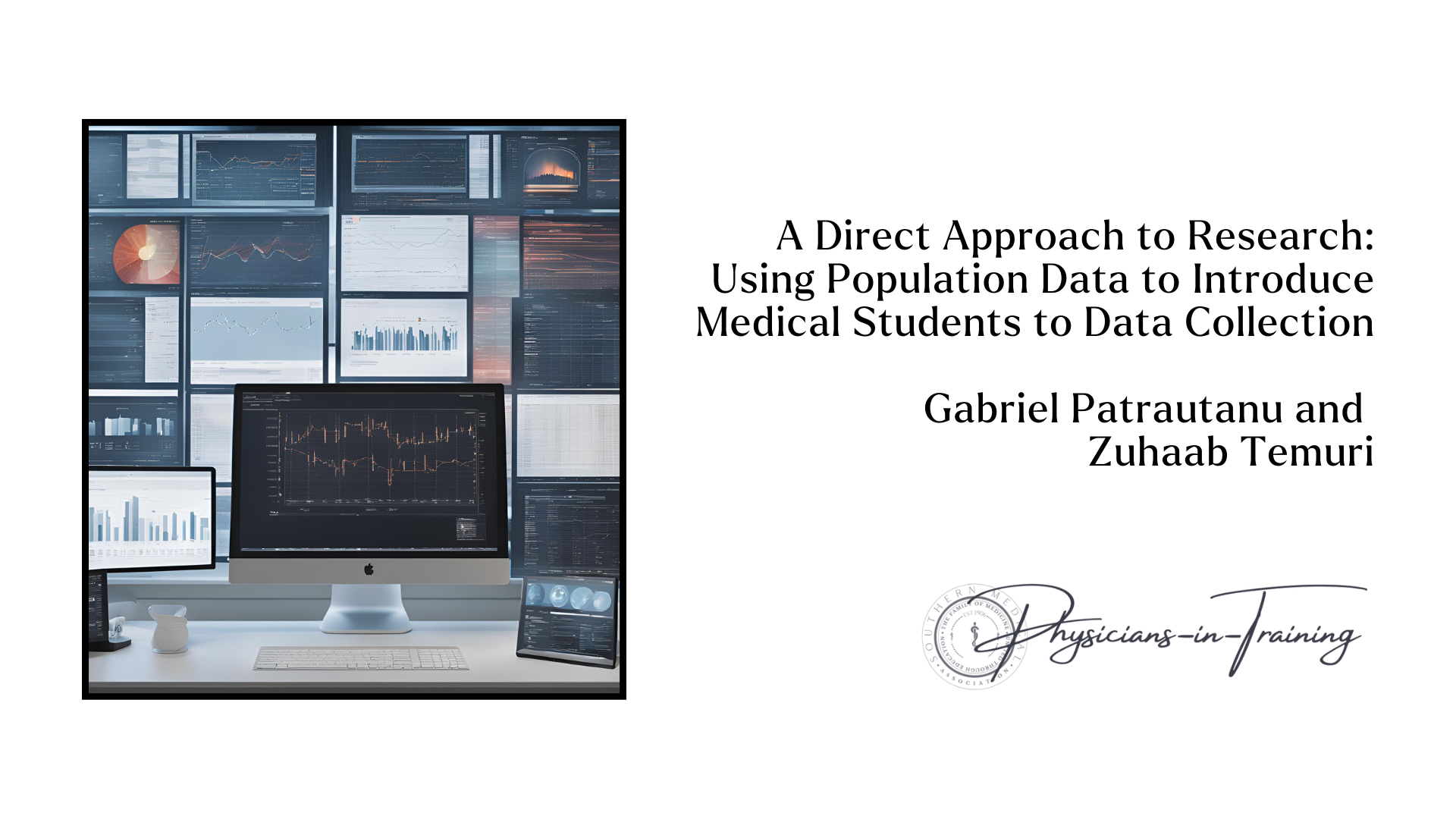
A Direct Approach to Research: Using Population Data to Introduce Medical Students to Data Collection
For many medical students, the path to getting involved in clinical research has a high barrier to entry. While research is a crucial part of medical education, the process of securing research opportunities, mentors, and adequate databases with the security clearance and data processing tools necessary to access them can be challenging. I faced these obstacles firsthand, struggling to find a way into clinical research during my early years of medical school. By the time I had begun research projects during my third year, I wished I had some low-cost tools that could have exposed me to gathering and applying my own data without the burden of needing connections within a particular health system.
However, there does exist a valuable and often overlooked tool that can introduce medical students to meaningful research even before they begin their clinical rotations: open-source population data. Provided by state health agencies, this data is publicly available and free to use. Some examples that I have used are the CDC WONDER database and the SC Rural Healthcare Dashboard. Unlike hospital records or other clinical data, which often require deep connections within academic departments, population health data is easily accessed by anyone with an internet connection. There’s no need to navigate institutional red tape, request permissions, or wait weeks for approval to access the information. This immediate availability makes population data a great place to start for medical students looking to conduct research.
The benefits of using open-source population data in medical education are numerous. First, it can serve as a powerful teaching tool for medical schools. By incorporating population health data into their clinical evidence curricula, schools can give students hands-on experience in data analysis and epidemiology, helping them understand how large-scale health data informs policy and clinical decisions. Second, working with state-level data helps students become familiar with the health challenges specific to their region, as well as learn more about their local health department. This is particularly important for future physicians, as an understanding of local health issues can enhance their ability to address the needs of the communities they will one day serve.
Additionally, many medical students are passionate about tackling health disparities. Population data offers a unique opportunity to explore these disparities at the state level. By analyzing data on chronic diseases, mortality rates, and access to healthcare, students can identify disadvantaged populations and regions within their state, and students can overlay this information with other variables such as funding dollars, medical education, and demographic data. This type of research not only builds students’ skills in applying online data to real-world problems but also empowers them to contribute to discussions on health equity. A student who is well-versed in the disparities that exist in their own communities will become a powerful healthcare advocate later in their career.
In short, medical schools should emphasize the use of population data as a research tool for students. By doing so, they can help bridge the gap for students who lack access to traditional research opportunities, while simultaneously fostering a deeper understanding of their local public health and disparities. This must not be an attempt to flood the field with lower-quality projects but serve as a stepping stone that can teach the next generation of medical students how to acquire, analyze, and present relevant data. Open-source population data is a readily available, cost-free resource that holds immense potential for teaching and learning. Encouraging its use can help train the next generation of physicians to not only become skilled clinicians but also be informed researchers and advocates for their communities.
Sources:
SC Center for Rural and Primary Healthcare. SC Rural Healthcare Resource Dashboard. Columbia, SC: University of South Carolina, School of Medicine; 2023. https://arcg.is/0fLSCW
Centers for Disease Control and Prevention (2024, August 21). CDC WONDER. CDC.gov. https://wonder.cdc.gov/
Gabriel Patrautanu is a medical student at University of South Carolina School of Medicine, Class of 2025, and serves on the PIT Committee's Personal Development Subcommittee. Zuhaab Temuri is a fourth-year medical student at the University of South Carolina School of Medicine.
